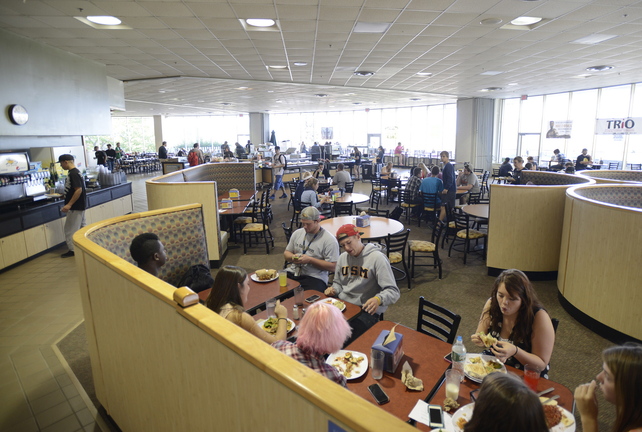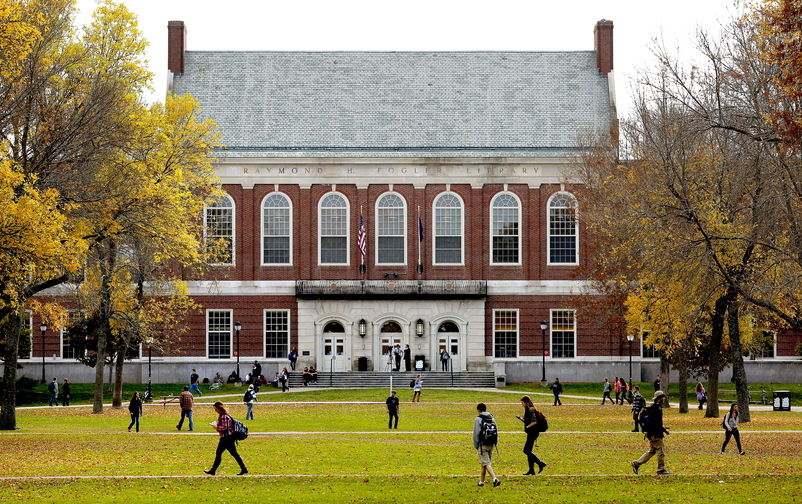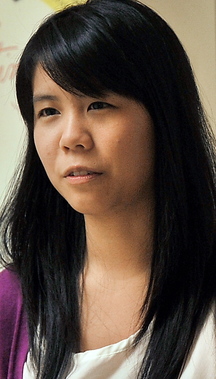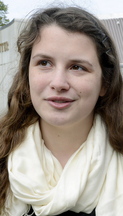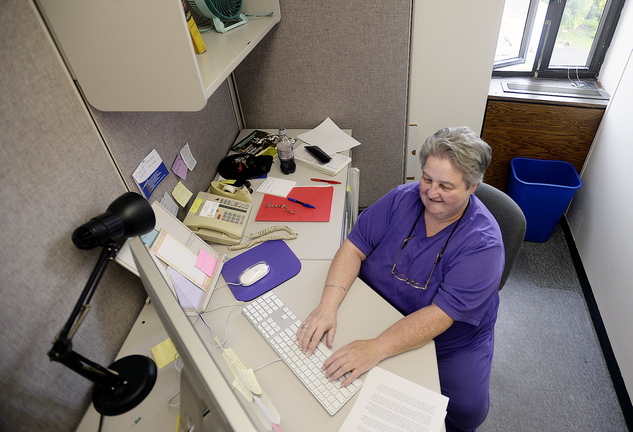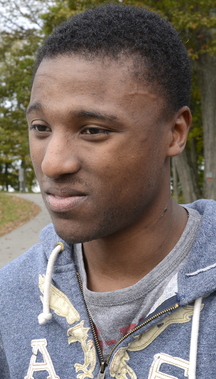Maine’s public universities are fighting for every student they can get.
A shrinking pool of Maine high school graduates is forcing the universities to adopt new tactics and target more nontraditional students, primarily out-of-state students, transfer students and international students. But other states are facing the same problem and are increasing their recruitment efforts, too.
The result: Competition for would-be college students is at a fever pitch, officials say.
“It is more competitive; kids have a lot more choices,” said Tracey Moore, a college guidance counselor at Deering High School in Portland.
That has recruiters at the seven-campus University of Maine System digging deep for new ways to attract students. Between 2008 and 2012, systemwide enrollment dropped 4.9 percent; enrollment dropped 8 percent at the flagship campus, Orono’s University of Maine, and 6 percent at the University of Southern Maine.
System officials have started chasing nontraditional students, such as students from other countries or ones who left college without a degree; targeted students from outside New England, where the system has not traditionally focused much attention; and used more sophisticated data-mining methods to find out what features certain prospective students look for in their college experience.
Deering senior Jenny Chiem, one of those Maine high school students, is on the cusp of deciding whether to go to a more expensive college out of state that has an attractive academic program or stay in-state, where tuition is lower.
“I’m not that picky about schools, but I don’t want to be a burden to my family,” said Chiem, who wants to study physical therapy and is leaning toward Northeastern University in Boston. She’s a multilingual, first-generation student, enrolled in honors classes with grades that put her in the top 10 percent of her class. She has strong SAT scores, works at a family business and volunteers on environmental issues.
“What school wouldn’t want her and give her a good chunk of change?” Moore said.
For graduating seniors, cost has always been a consideration in choosing a college, and the lackluster economy has made it worse, she said. Students and their families are focused on the price of college after hearing stories about soaring tuition and college graduates who leave school saddled with huge debt and bleak job prospects.
That financial concern gives an advantage to selective schools with big endowments, which can offer aid packages that make attending a prestigious institution less expensive than going to an in-state university, Moore said.
At the other end of the educational spectrum, private schools emphasizing a fast track to a job-ready degree also have drawn off traditional students from public universities. In Maine, those schools include an expanding Kaplan University and Husson University, which together enrolled almost 5,000 students last year.
“I have sympathy for the UMaine System. I think they’re between a rock and a hard place and through no fault of their own,” Moore said. “There’s a game out there that is not to their advantage.”
That scramble for students has hurt the UMaine System even though it froze tuition two years ago and continued to offer a traditional liberal arts education while introducing more targeted degrees in sports management or hospitality.
So how do Maine state universities make sure they’re reaching out to the right potential students? Analyzing their online behavior, for one.
For the first time this year, the University of Maine used data-mining software that tracked how prospective students clicked around on UMaine websites, allowing the school to follow up with personalized letters that reflected that person’s interests.
At the University of Southern Maine, enrollment officers sought to lock up student commitments early, initiating an early acceptance policy this year. They also sent recruiters to college fairs in Chicago and Virginia – far outside the usual New England territory – in search of prospective students.
ENROLLMENT FALLING
The problem has been years in the making, according to Rosa Redonnett, who oversees the UMaine System’s enrollment as executive director of student affairs. The drop in enrollment, she said, is tied directly to Maine’s aging demographics.
In 2008, there were more than 14,000 Maine high school graduates. In 2012, the number was 13,042. And by 2020, the figure is expected to be around 12,000, Redonnett said.
The silver lining for recruiters is that the percentage of Maine high school graduates choosing to go to college is up 9 percent, and the number going to college in-state is up 16 percent, according to a report by the National Student Clearinghouse. Overall, the number of Maine college-going graduates choosing an in-state college was 71 percent in 2012, according to the report.
That’s higher than the 67 percent of Massachusetts’ graduates staying in-state, Vermont’s 54 percent and New Hampshire’s 52 percent, according to data from state education officials in those states.
Sanford High School graduate Emma-Leigh Stevenson said she wound up staying in-state largely because of family tradition.
“I looked at University of New Hampshire and (Orono) but I had a lot of family that went here and I heard it had great programs,” said Stevenson, 18, as she walked across the Gorham campus of USM. “It was really affordable and it’s nearby Portland, so it’s not in the middle of nowhere.”
Even with students like Stevenson, UMaine System officials see they’ve largely maximized the potential for attracting in-state students, which in fall 2012 made up 86 percent of the students throughout the system. Out-of-state students made up 12 percent and international only about 2 percent.
To grow the university, as costs go up and state funding dwindles, officials have to increase the number of nontraditional students.
Incentives targeting those populations are a key growth strategy, officials said.
“We saw this coming back in 2009-2010, when we launched our systemwide enrollment management,” Redonnett said.
With state funding flat, and costs going up, a dropping enrollment represents a major crisis for the system. Other states facing the same situation since the recession took hold in 2008 have slashed funding and sent tuition soaring.
Maine fared better than most states, since state funding has been flat in recent years. That allowed the UMaine System to freeze tuition two years ago. Tuition and mandatory fees are $10,700 a year for in-state students at UMaine in Orono and $27,970 for out-of-state students. At USM, tuition and fees are $8,920 for in-state students sand $21,280 for out-of-state students.
Today, being able to tout flat tuition is considered one of the most important “recruitment” tools at hand.
That was a major selling point for Caribou High School graduate and USM freshman Ron Lund.
“I was very economical,” Lund said about his college search. “(USM) fit my budget and they had the programs I wanted.”
Just as important as getting new student populations enrolled, the schools are putting more resources into holding on to the students they already have. That ranges from providing a welcoming dorm experience with more student activities to adding majors and classes that are popular with students.
A close-knit community was important to Aaron Halls, 18, of Lisbon. A freshman at USM, he’s one of 50 first-year students in the Russell Scholars Program, a special learning and residential program where the scholars live together, have computer labs and support services in the building and individual faculty advisers.
“I looked at schools out of state, and I tried to look for smaller schools,” said Halls. “The Russell Scholars (Program) has been great.”
TARGETING NEW STUDENTS
Jimmy Jung, vice president for enrollment management at UMaine, says he’s had to “work smarter” to increase recruiting numbers. The big change this year was using data-mining techniques to get tailored profiles of would-be students by tracking their online behavior on UMaine websites.
“It made a big difference,” Jung said. The fall 2013 freshman class is 2,170 students – up from 1,842 students last year.
“It’s a very targeted marketing campaign,”Jung said. “You have to become more responsive to the individual student.”
In the same way that political mailers are highly targeted to specific kinds of voters, the school is now targeting specific kinds of students. It starts by analyzing data to identify likely students, down to the ZIP code and school level, where the student profile closely matches that of current UMaine students, indicating they would be more likely to be interested.
Email is sent to those prospective students, and then the school tracks which students click through to Web-based promotional materials – and how long they spend in different sections. Based on that student’s response, the school sends a follow-up letter that reflects the student’s interests. For instance, a prospective student who lingers on a page about the school’s sports programs would get a letter with more detail about the sports teams, for example.
“It doesn’t help to scatter the message,” he said. “We don’t have enough money to tell the whole world. Who do we tell? The targeted student, using data.”
The UMaine System is also targeting “up and coming markets” outside New England, reaching down as far south as Pennsylvania and Virginia.
“We’ve never really pushed our outreach to those areas,” he said.
Those out-of-state students also pay higher tuition, even higher than New England students, or Canadian students who are offered a special 150 percent of in-state tuition rate through a long-standing agreement reached in 1957 among members of the New England Board of Higher Education.
Another target population is international students, who pay full out-of-state tuition rates. Today, 662 international students attend the UMaine system – 2.1 percent of the total student body.
This fall, the UMaine System announced a partnership with a company to more than double that number by recruiting foreign students in their home countries, and paying those recruiters 80 percent of the students’ first-year tuition and a smaller portion in subsequent years. The partnership with Study Group launched at UMaine in Orono this year with fewer than 10 students, and will expand to USM in the fall of 2014.
Officials anticipate the program will eventually bring in 300 students per year to UMaine, and 100 students per year to USM.
Jung said many of the system’s current international students are from Southeast Asia and he expects those numbers to rise, since there is a rising middle class in those countries, and families and governments want their students to get a U.S. education.
Aside from hiring outside recruiters, the campuses are also forging ties with universities in other countries. At USM, the school recently opened a Confucius Institute, which partners the school with a Chinese university.
Transfer students have been an increasing presence at the universities, particularly as the Maine Community College System has grown in the last decade.
Last year, the number of transfer students coming from the Maine Community College System increased 20 percent for the year, and transfers from other institutions increased 16.4 percent.
Officials want to further increase those numbers by creating a more seamless transfer system so students know exactly which courses will transfer for credit and how they will count toward a four-year degree.
Erika Landon, originally from Bangor, transferred to USM this year from Suffolk University in Boston.
“I didn’t feel like the education was balancing out with the cost,” said Landon, 19, who lives in a dorm and said she’s happy she transferred back to Maine.
The schools are also targeting people who may have gone to college for a time but left without a degree. In Maine that’s about 230,000 people, a huge potential pool of returning students.
Lucie Tardif said she never thought she’d be back in college in her 50s.
“I actually was a student at USM 25 years ago,” said Tardif, 57, who dropped out after taking two courses. “I thought I would never, ever be able to come back.”
She was laid off in 2007 after being a paralegal for decades, and couldn’t find work. Unemployment ran out, and she decided to go back to school. After getting an associate degree at Southern Maine Community College, she transfered to USM to pursue a degree in media studies.
“Finally! I graduate in May with the bachelor’s degree that has eluded me for so long,” Tardif said. While the economy drove her back to school, she said, she picked USM because it was close to her home and offered her a good financial aid package.
For older or returning students, USM offers credit for “life experience” that can shave requirements toward a degree. Open house nights explaining the program, and special counseling services, are part of the effort.
Noel K. Gallagher can be contacted at 791-6387 or at:
ngallagher@mainetoday.com
Send questions/comments to the editors.


